Red-figured terracotta stamnos
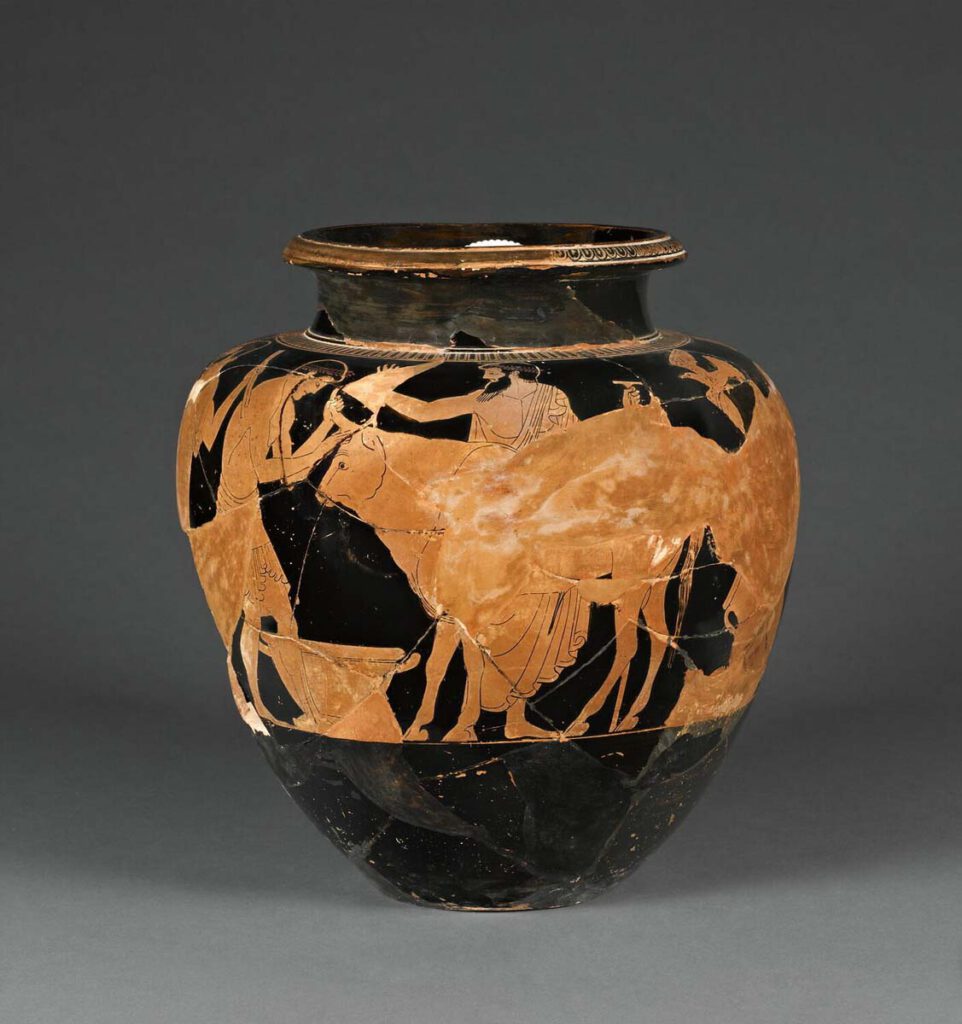
Red-figured terracotta stamnos – Vessel for storing liquids, attributed to the Eucharides Painter, early 5th century BCE, with two figures preparing a bull for sacrifice. When slaughtered, iron ions derived from the haemoglobin in the animal’s blood would interact with fats and oils to form volatile aldehydes and ketones, like Oct-1-en-3-one, typical sources for the […]
Black-figured terracotta column-krater

Black-figured terracotta column-krater – Vessel for mixing wine and water, late 5th century BCE, with men sacrificing a goat to a terminal figure of the god Hermes. The sacrificial victim has been dismembered and a part is being held in the flame on the altar. The entrails resting on the small table would release odorants […]
Roman marble version of a dying Gaul
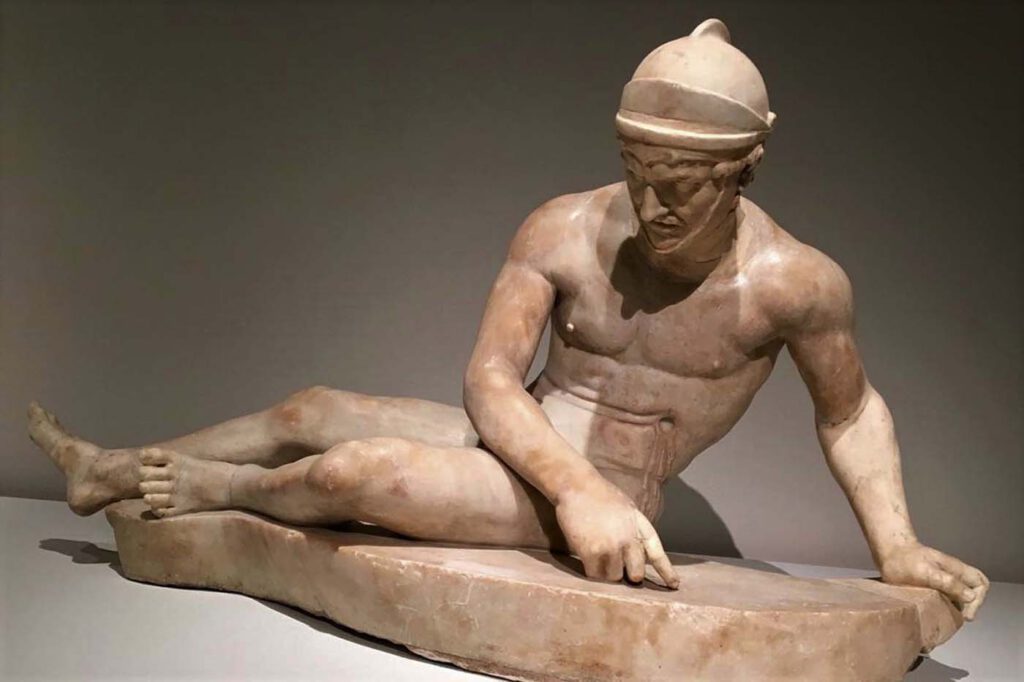
Roman marble version of a dying Gaul the original was part of a major sculptural display on the Athenian Acropolis of Attalid Greeks fighting Gauls in Asia Minor, Gods fighting Giants, Greeks fighting Amazons, and Greeks fighting Persians in the Persian Wars, c.200 B.C. Naples Dying GaulPhoto: Mary Harrsch, CC-BY-NC-SA-2.0 – In c. 200 BCE Attalos […]
Marble votive relief

Marble votive relief showing votive body-parts c.480 B.C., fourth-century B.C. from Asklepieion at Athens Notwendige Votive Relief – Acr. 7232 © Acropolis MuseumPhoto: Constantinos Vasiliadis – A number of Greek sanctuaries, and in particular sanctuaries of healing god Asklepios, have yielded dedications of votive body-parts. These include arms and hands, legs and feet, eyes, ears, […]
A fresco, Catacomba di Via Dino Compagni
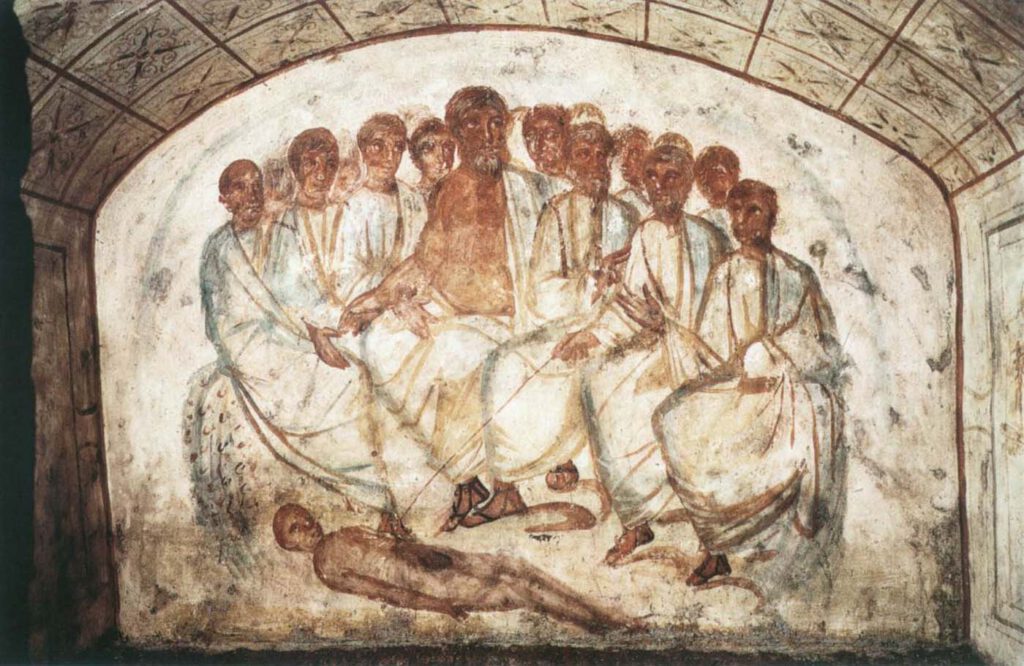
A fresco, Catacomba di Via Dino Compagni © foto Pontificia Commissione di Archeologia Sacra” or “© foto Archivio PCAS” [Kontakt zur PCAS in Arbeit] – This fresco from the hypogeum of Via Dino Compagni in the Via Latina Catacomb in Rome dates to the fourth century CE. It shows a large group of men looking […]
Athenian red-figure cup attributed to Douris
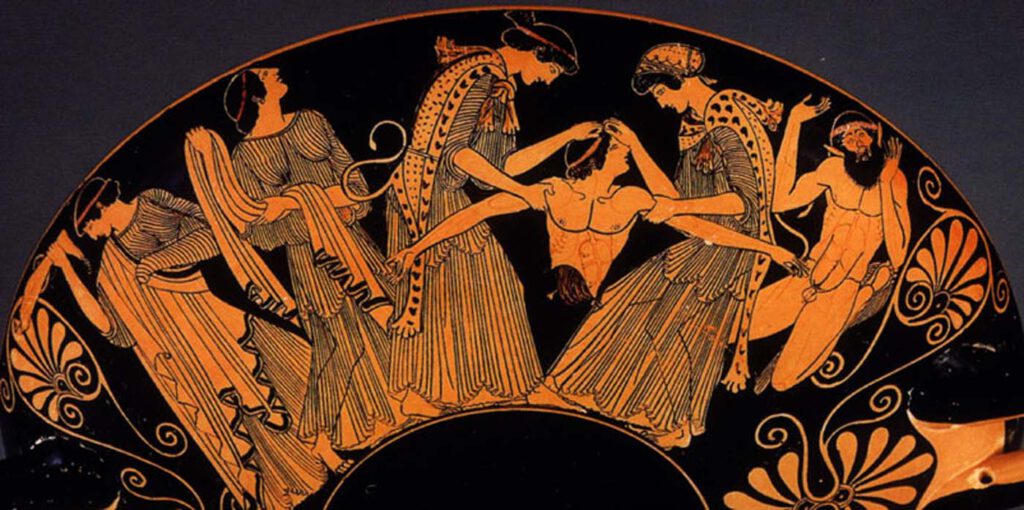
Athenian red-figure cup attributed to Douris death of Pentheus (detail), c.480 B.C. Cervetri, Museo Nazionale CeritePhoto: 2023@photo Scala, Florence, Kimbell Art Museum, Fort Worth, Texas /Art Resource, NY/Scala, Florence – The death of Pentheus is most familiar in the description given by Euripides in Bacchae. There a messenger speech describes how Pentheus’ mother, Agave, and […]
A female ‘open torso’ figurine

A female ‘open torso’ figurine Nottingham Castle Museum – This female figurine was discovered at the sanctuary of the Graeco-Roman goddess Artemis/Diana Nemorensis at Lake Nemi in Italy in 1885. It was excavated and recovered from a sacred pit where it had been ritually disposed of sometime in antiquity after it had ceased to be […]
A polyvisceral plaque
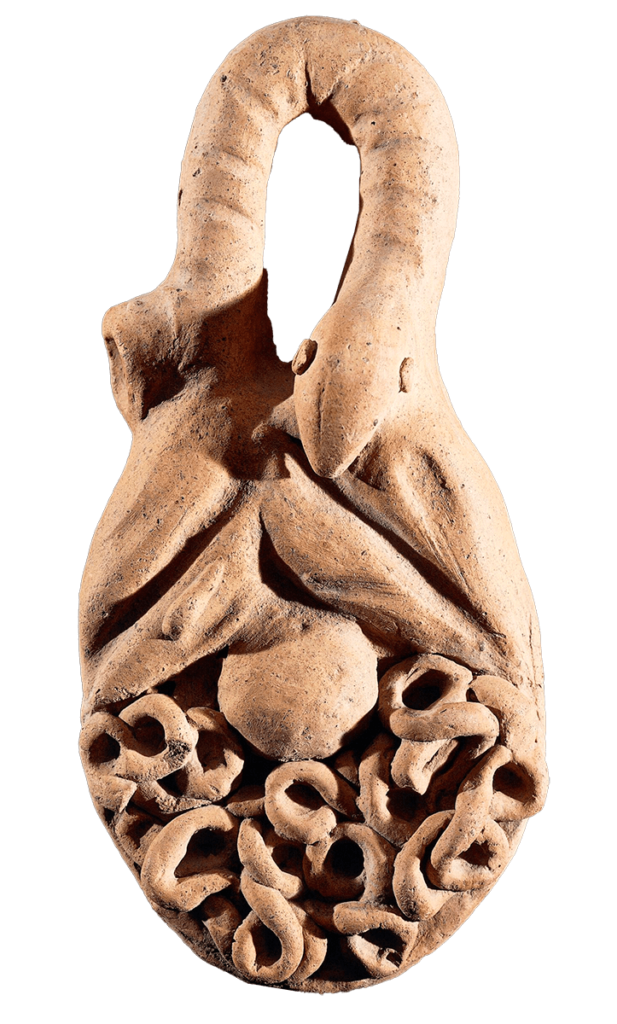
A polyvisceral plaque Museo Nazionale Etrusco Di Villa Giulia – This Etruscan polyvisceral plaque from Tessennano in Latium in Italy is thought to date from around 400 BCE. Anatomical votives like these were deposited in sanctuaries and temples as offerings to the gods, generally interpreted as a gesture of gratitude for some manner of divine […]
The ‘Piacenza Liver’
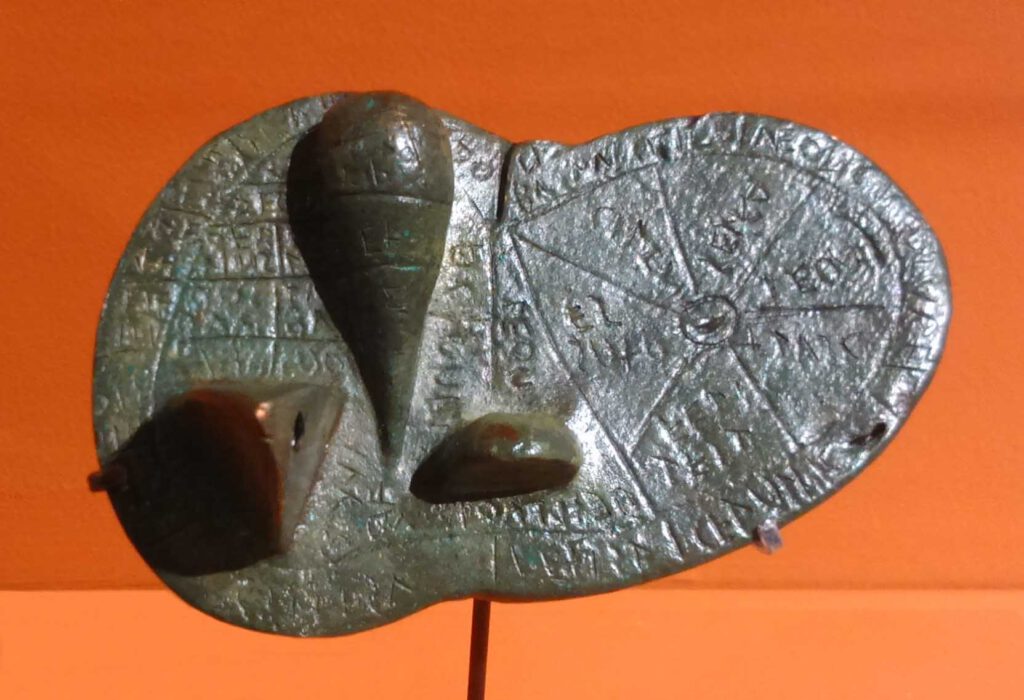
The ‘Piacenza Liver’ Municipale Museum of Piacenza CC0 1.0 Universal (CC0 1.0) – This Etruscan bronze life-size model of a sheep’s liver was discovered in a field near Gossolengo in Piacenza in Italy in 1877 and is thought to date from the late second or early first century BCE. Although its precise purpose is not […]
Athenian red-figure cup attributed to Oltos, examination of the liver of a sacrificial victim
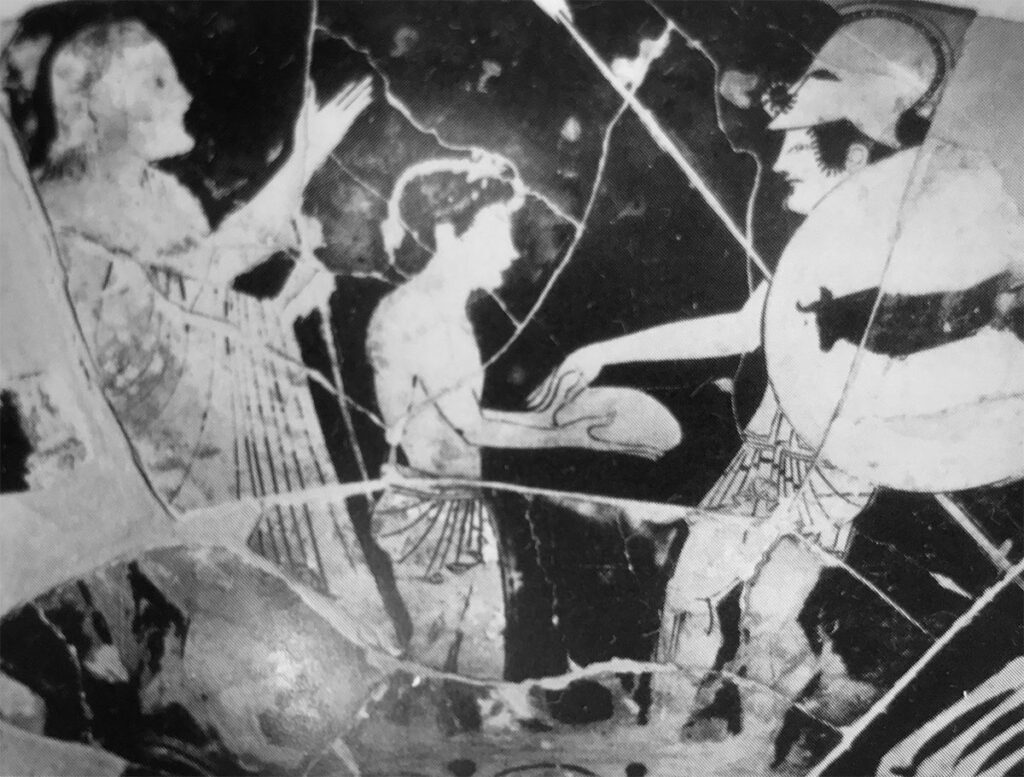
Athenian red-figure cup attributed to Oltos examination of the liver of a sacrificial victim (‘hieroscopy’), c.500 B.C.Cervetri, Museo Nazionale Cerite Photo: Jaime Ardiles-Arce – Representation of warfare is a feature of Greek painted pottery from the earliest figurative images from the eighth century BCE. In the second half of the sixth century and into the […]
